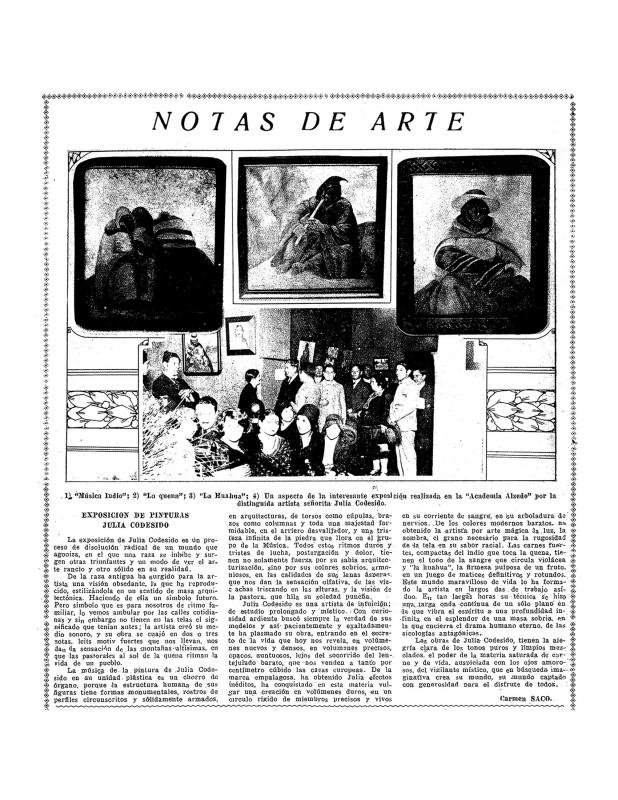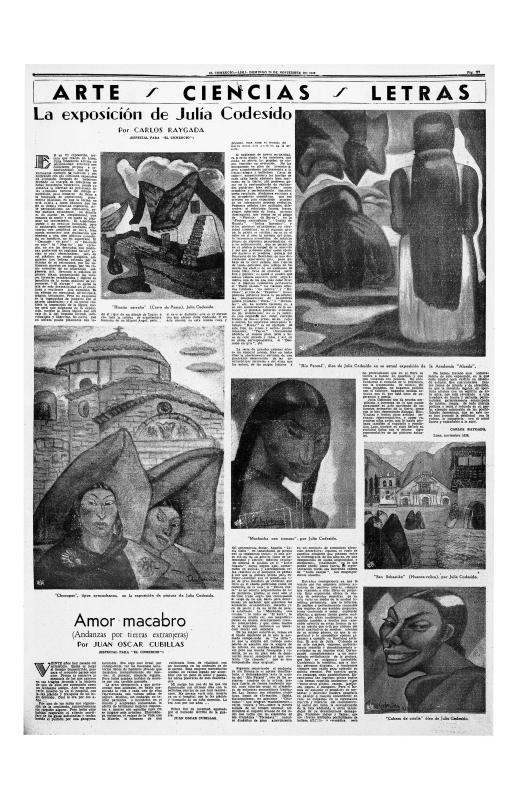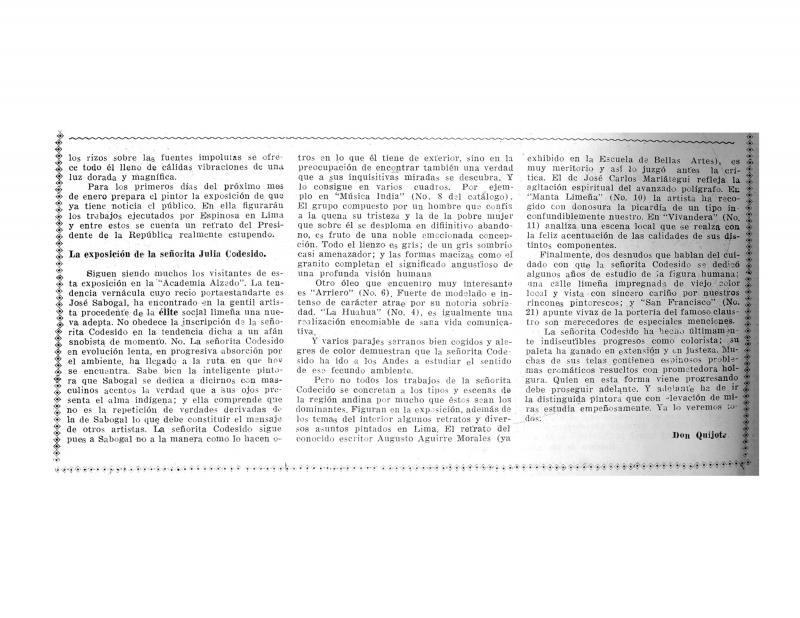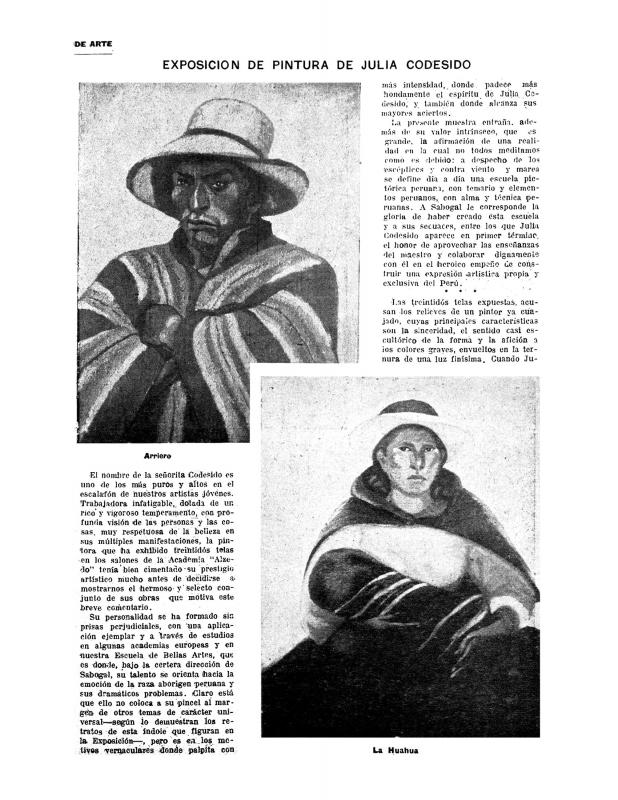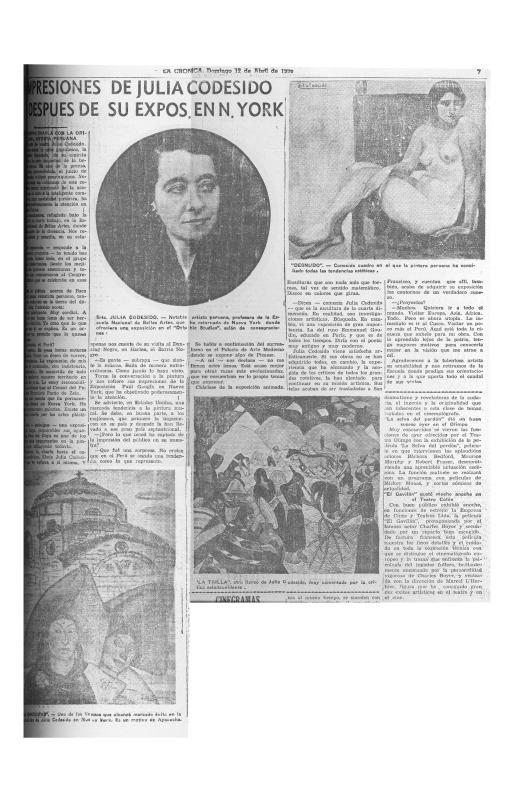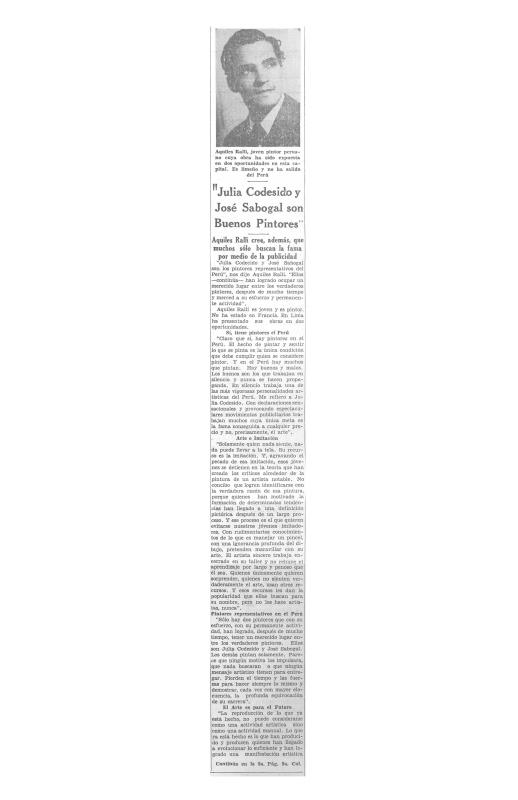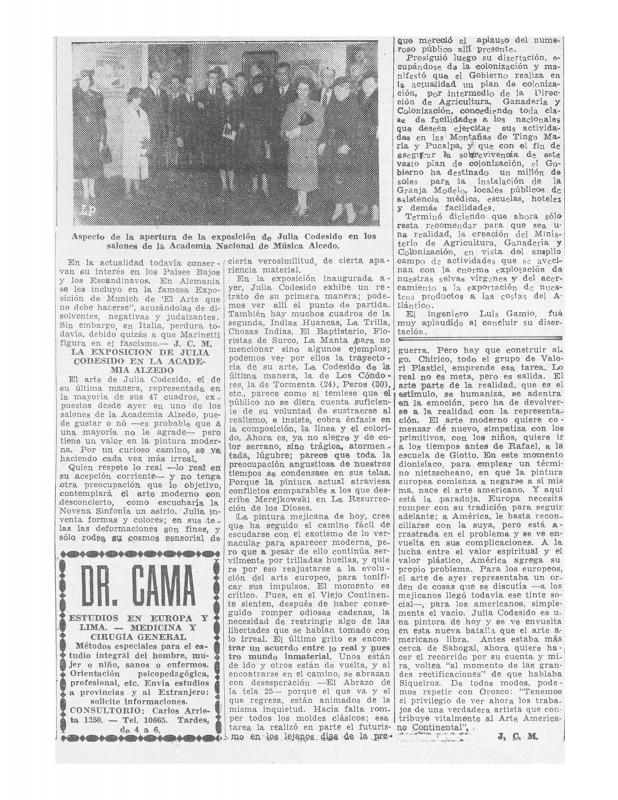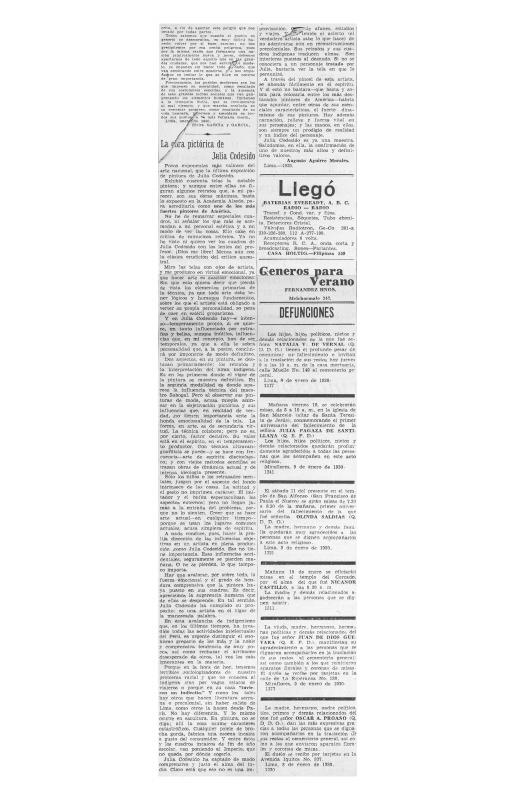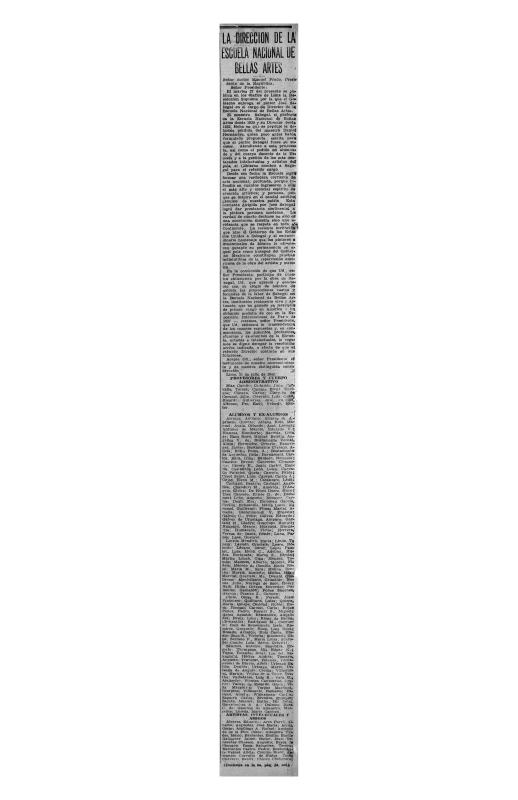In this review, the Peruvian journalist and art collector Juan Puppo discusses the exhibition of works by Julia Codesido at the Academia Nacional de Música Alcedo (Lima, 1938), viewing her paintings within the context of women’s art and literature.
Unlike her companions, Julia Codesido embraced indigenism as her point of departure on a journey of personal growth that took her—in her later years—to the very threshold of abstraction, combining a “visual discovery of the country with the inexorable influx of modernity” [Wuffarden, Luis Eduardo. Julia Codesido (1938–1979): muestra antológica. (Lima: CCPUCP, 2004)]. Her development as an artist can be explained by her family’s migration to Europe in the early twentieth century, where she witnessed the evolution of the artistic avant-garde. Back in Lima she first took classes at the painter Teófilo Castillo’s studio, and then attended the Escuela Nacional de Bellas Artes once it opened in 1919. When she had her first exhibition at the Academia Nacional de Música Alcedo (Lima, 1929) she was described as an artist with a “preference for the vernacular.” But she already stood out because of her artistic nature and her ability to combine color and design in her expressive style. In 1931 she became a professor at ENBA, but after her second solo show, consisting of far more complex paintings, her artistic ambition prompted her to quit academia. Despite her interest in the living culture of Peru, her style cannot quite be pigeon-holed into an ethnographic category. In 1935, as one of the first artists to have an exhibition at the opening of the Palacio de Bellas Artes in Mexico City, she took her place on the international stage. The recognition her painting received from Mexican muralists opened doors to the North American market, where she exhibited at the Delphic Studios gallery in New York (1936) and the Museum of Modern Art in San Francisco (1937).
[As complementary reading about Julia Codesido, see the following articles in the ICAA digital archive:by Carmen Saco “Disciplina y sentido cósmico en los cuadros de Julia Codesido” (doc. no. 1136583) and “Notas de arte: Exposición de pintura Julia Codesido” (doc. no. 1136647); by Carlos Raygada “La exposición de Julia Codesido” (doc. no. 1141261); by Raúl María Pereira “La exposición de Julia Codesido” (doc. no. 1141245); by Carlos Solari (under the pseudonym “Don Quijote”) “La exposición de la señorita Julia Codesido” (doc. no. 1147891); by Clodoaldo López Merino (under the pseudonym “EGO”) “Exposición de pintura de Julia Codesido” (doc. no. 1147874); (anonymous) “Impresiones de Julia Codesido después de su expos. en N. York” (doc. no. 1141277); by Aquiles Ralli “Julia Codesido y Sabogal son buenos pintores” (doc. no. 1150882); by J. C. M. “La exposición de Julia Codesido en la Academia Alzedo [sic]” (doc. no. 1141179); and by Augusto Aguirre Morales “La obra pictórica de Julia Codesido” (doc. no. 1141196).See also the letter written by the faculty and students of the Escuela Nacional de Bellas Artes, cosigned by Codesido, to the then-president of Peru Manuel Prado Ugarteche, asking that José Sabogal be reinstated as director of the school (doc. no. 1140784)].


